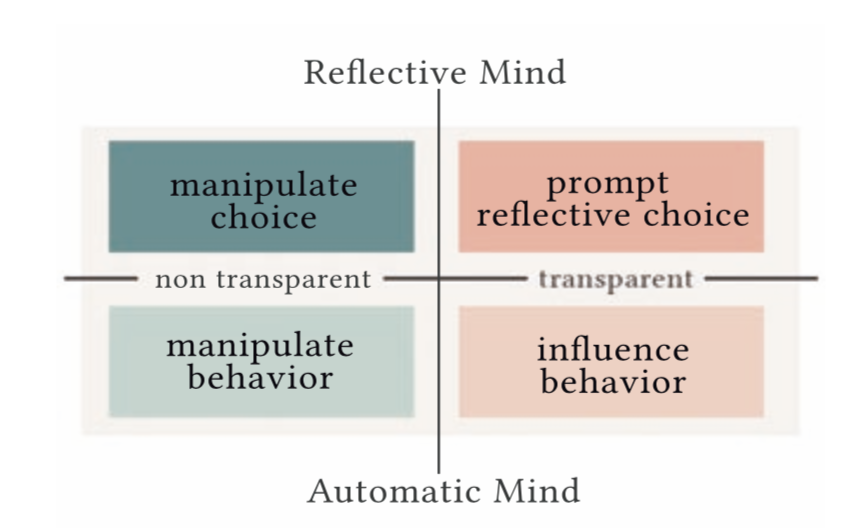Ten years ago, Thaler and Sunstein introduced the notion of nudging to talk about how subtle changes in the ‘choice architecture’ can alter people’s behaviors in predictable ways. This idea was eagerly adopted in HCI and applied in multiple contexts, including health, sustainability and privacy. Despite this, we still lack an understanding of how to design effective technology-mediated nudges. In this paper we present a systematic review of the use of nudging in HCI research with the goal of laying out the design space of technology-mediated nudging – the why (i.e., which cognitive biases do nudges combat) and the how (i.e., what exact mechanisms do nudges employ to incur behavior change). All in all, we found 23 distinct mechanisms of nudging, grouped in 6 categories, and leveraging 15 different cognitive biases. We present these as a framework for technology-mediated nudging, and discuss the factors shaping nudges’ effectiveness and their ethical implications.
| Caraban, A., Karapanos, E., Gonçalves, D. & Campos, P. (2018) 23 Ways to Nudge: A Review of Technology-Mediated Nudging in Human-Computer Interaction, In Proceedings of CHI’19. |
